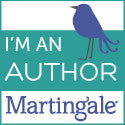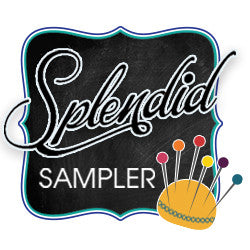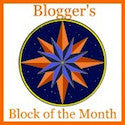Hello Everyone,
Welcome to Part 2 of the Whirlygig Tutorial. Sources for the tools used will be at the end of the post. This part is all about paper piecing, one of my favorite ways to quilt! This is mostly because of it's accuracy and precision. So, let's begin...
First you must have your arcs all printed and trimmed to about 1/4" from the edges. Each whirlygig circle requires 4 arcs. Also have ready either a piece of template plastic or postcard, (something rigid) and a glue stick. Locate #1 on the paper foundation, then flip the foundation over...
...and swipe the #1 spot with the glue stick. This will keep the first piece of fabric in place.
Attach the first piece of fabric, right side up, to where you applied the glue. It is important to make sure the fabric covers the entire #1 area and the seam allowances. You can check this by turning it over and holding it up to the light.
You can see it better here in this photo. Now take your piece of template plastic and place it on the solid line. Hold template plastic in place and fold back the paper foundation.
This is what it will look like folded back.
Then take your add a quarter ruler and butt the lip of the ruler against the rigid plastic. You will see excess fabric extended beyond the ruler.
Take your rotary cutter and trim away the excess. This will leave an exact quarter inch of fabric left to sew the seam allowance.
Now flip the foundation back over so the fabric is facing up, add your next piece of fabric, matching the cut edge of the #1 piece with the edge of the next piece as pictured above. Fabrics are right sides together. It is critical that you make sure the #2 piece of fabric will cover the #2 area on the foundation prior to sewing.
Now time to sew. You will need to decrease your stitch length on your machine to about 1.5. This will allow for you to pull the paper away without pulling the stitches out. Stitch on the solid black line.
Turn the foundation over and press the #2 piece back for a very crisp seam. Then you will repeat the "flipping and sewing" technique as you just did until you have filled up the foundation sheet.
You can see what it is starting to look like.
Here is the whole arc completely sewn before trimming down. Now turn it over to see the line on which you should trim the excess fabric away. If you are confident, you may trim with a rotary cutter. If not, carefully trim with a scissors.
This is what you will have once trimmed. A beautiful spikey arc!
Continue to repeat the process making 3 more arcs to fit around the whirlygig circle.
The third installment will show you how to attach the arcs. This most likely will come next week. I am currently on a quilting retreat taking the remainder of the photos!
Tools and sources:
For this project, I used Fons and Porter Glue Marker. However, if you don't have this you can use UHU glue stick as it is washable. Be sure to check your glue stick to assure it is NOT permanent.
Add A Quarter ruler can be found here.
Quilts With A Spin by Becky Goldsmith and Linda Jenkins for the paper foundation arcs.
I hope you are enjoying this so far!!
Until Next Time...



























